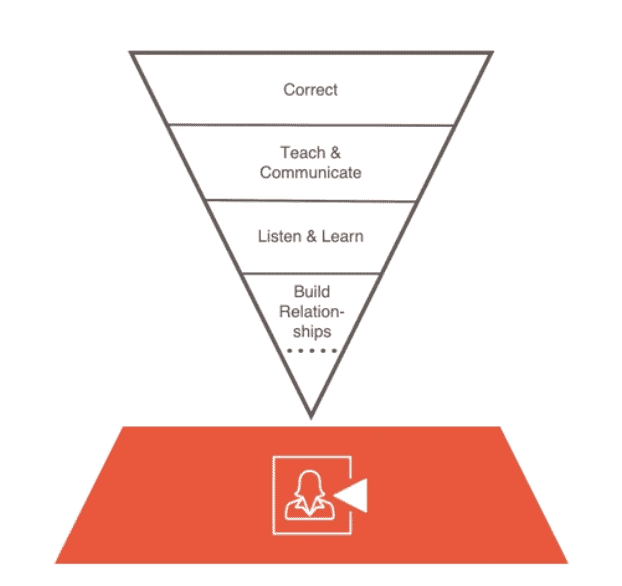 I’ve been inspired by the work of the Arbinger Institute (see my book Developing a Positive Culture) so I was thrilled to attend this webinar by Mitch Warner, their managing partner, about improving Diversity, Equity and Inclusion (DEI) in organizations.
I’ve been inspired by the work of the Arbinger Institute (see my book Developing a Positive Culture) so I was thrilled to attend this webinar by Mitch Warner, their managing partner, about improving Diversity, Equity and Inclusion (DEI) in organizations.
Bringing more DEI into the culture will dramatically improve the bottom line. It’s an ingredient of long-term positive or high-performance organizations. But if your organizational culture can improve – how do you change it?
Mitch Warner shows that mindset matters most. Change the mindset – change the behaviors – change the outcomes.
The typical way to change is to prescribe the new behaviors you want to see. So, you design policies and practices for equity and inclusion and tell people to do this.
But if you don’t address the mindset, you might change behaviors for a time but sustainable results won’t happen. That’s why my culture approach is inclusive and engages people in teams – where they develop both behaviors and mindset and beliefs. McKinsey research showed that organizations that address the mindset have 4 times more results than organization that don’t. If you shift mindset first, the behaviors will start to happen spontaneously.
Two ways to show up
Arbinger defines your mindset to others – whether you are in or out the box.
The inward mindset is focused on yourself and “others don’t matter like I matter”. They are objects or means to your ends.
The outward mindset knows: Others are people and their needs matter, too. So, I adjust what I do so that I serve others, too.
Ask yourself: are people in my team feeling like a vehicle that I use? An obstacle that I blame? An irrelevance that I ignore? Or do people feel seen as individuals, do I serve and uplift hem, support them? Everyone has a radar for this mindset and will detect quickly how you see them.
Warner says: “This distinction is critical in organizations and change, especially in equity and inclusion.”
Arbinger’s research, based on an assessment is that people see their organizations at 4,6 out of 10: so more inclined to the inward, “selfish” mindset. They see themselves at 6,8 – with an outward, other-focused mindset. People say: “I am okay, but my organization is less so”. There’s a self-perception gap probably, but also a huge opportunity to develop organizations for the better.
The influence pyramid
If you want to successfully change anything (and improve the DEI score of your organization) you first have to turn your mindset to outward.
Once you did that, you might want to jump to correcting the policies and practices, and prescribe the behavior we want to see. However, this is less effective than co-creating or teaching.
Before you can teach, you need to listen and learn where the other is at.
But if we don’t have the right relationship: you might not listen, and the other might not share.
If that’s broken – you might first have to build relationships with others and you can start to influence later on. There’s no fast shortcut.
The lessons of using this pyramid are:
1. Work bottom up; spend the most time at the bottom with building relationships and listening and learning. There’s no need to correct here… we influence each other.
2. If you get stuck, the solution is at a lower level. My mindset matters most – you’ll feel if I don’t see you as a person but try to push and use you with an inward mindset.
What happens if we turn inward? We’ll spend more time with correcting behaviors, and less time in building relationships.
When we turn outward and use the influence pyramid, some powerful questions arise:
What do we need to change or correct in our organization?
Who do we need to teach and communicate and how?
Who do we need to listen to and learn more about?
How could we strengthen our relationship with them?
Who influences them and how?
Helping leaders live the pyramid
The (team) leader is the personification of the organization. So, ask yourself:
- What do I need to change or correct – for instance to get more DEI?
- Is my communication informed by real understanding?
- Have I listened to those I lead?
- Are my relationships with the people like me different than those who are different?
- Do I really understand the challenges, feelings, objectives of everyone who is impacted by my change plans? Do I see them as people?
Slow is fast, in any process that involves sustainable change. You need to include and engage the others. Prescribing behaviors or ordering them to change does not work.
Don’t assume, but ask more; listen and learn! Beware of your mindset and benefit from the influence pyramid for improving DEI – and any other change in your organization.
(Source: Leadership for a Changing World online summit, September 2020).
© Marcella Bremer, 2021. All rights reserved.
Check out the next online Culture Change Leadership workshop – places are limited to guarantee interaction and quality.

One Response
HI great article. How do i reference the pyramid? Is this yours or from the seminar? thanks